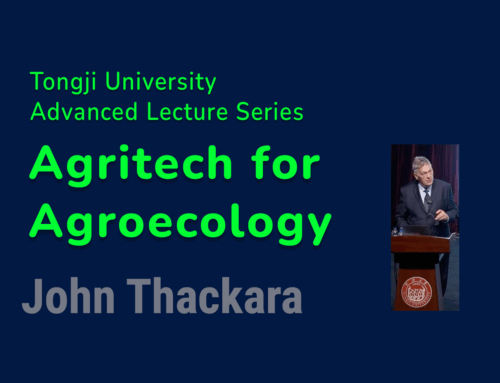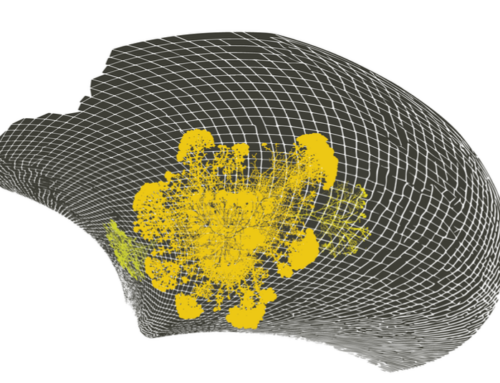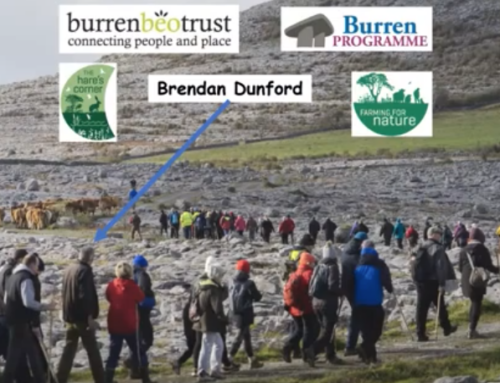People go hungry not because of a shortage of production, but because the food available is too expensive, or they lack the land to grow it on. In California, the prototype of a combined social, political and technical solution has been launched which promises to unlock the food system crisis.

“This could be it”. The speaker, Dan O‘Connell, is peering through a grill (above) into the cavernous interior of boarded-up corner shop in downtown Fresno, California. His fellow explorer, Kiel Schmidt, concurs: “It’ll take a bit of work, but we’ve got a bunch of people with skills lined up to help”.
For Schmidt and O’Connell, two founders of an organisation called The Food Commons, the building is on their shortlist for a retail store that will make fresh food available to some of Fresno’s 500,000 poorest citizens – for the first time. Within ten years, they plan to open a retail hub in each of the city’s food deserts – and this will be the first.
Our location certainly fits the bill of a food desert. We’ve driven for half an hour past miles of empty buildings and cleared city blocks – and I’m astonished to be told that this is ‘downtown’. Fresno was a degree zero of the 2008 property crash, and many blocks containing abandoned buildings have been bulldozed, leaving only dust.
On the corner opposite, a sign on the shabby gas station promises “Gas. Food. Liquor”. “People around here buy most of their food from places like this” Schmidt explains.“There might be the odd banana, but most of it’s cheap pre-packaged stuff”.

(Above: super-fresh greens grown in downtown Fresno)
Having hit me with this Bladerunner-like location, my mood lifts when Dan and Kiel take me next to one of the five sites of Tower Family Urban Farms (TUFF) in Fresno’s Tower District. The compound, where Kiel also lives, is filled with trays of seedlings. In 2013, its first year, TUFF grew one ton of tomatoes; that yield is growing by 50 percent a year. It’s a modest crop, but TUFF also supplies seedlings to the other urban farms and community gardens that are springing up across the city.
We move on, past yet more miles of sprawl on what used to be prime agricultural land. (Before it was built over, small farmers would grow up to 350 crops here – and all year round). We reach a large open space that was once a US Department of Agriculture test site, but is no longer needed by the federal government. Most of its 47 acres now lie dormant, but families of Hmong people from Vietnam cultivate 100 small plots in a central area.

(Above: Kiel Schmidt, left, and Dan O’Connell, at a former government test farm)
Over lunch at Peeves Pub and Market – as I drink locally-brewed beer, and eat super-fresh cheese and salad – the Food Commons team explain to this shell-shocked visitor why so much social and ecological devastation had befallen some of the richest growing land in the world.
Water, water
Although the Central Valley is home to the world’s largest swathe of ultra-fertile Class 1 soil, it’s also a semi-arid landscape with a natural rainfall of just 20 inches. In 1979, the writer Joan Didion described as the ‘plumbing narrative’ the illusion that California’s agricultural success story would be assured by a perpetual flow of imported water. Behind the illusion was the State Water Project, a massive network of reservoirs, canals and pumping stations developed mid-20th Century to transfer water from Northern California to the rest of the state. From the start, the project promised more water than it could ever deliver long-term, and by 2014 the system had all but dried up.
(Above: it takes a gall0n of imported water to grow one single almond in this semi-arid valley – and 85% of the crop is exported to China and India)
Industrial-scale farms that could afford the $200,000 to $600,000 price tag began digging deeper and deeper to tap into a once-unreachable aquifers. But the result of the water-drilling frenzy, as described by local reporter Vic Bedoian, was a kind of ‘hydrological arms race’. When scientists used satellite images to estimate the rate of withdrawal from the region’s water table in 2011, they warned of “potentially dire consequences for the economic and food security of the United States.” Soon, because drilled water quality declines the deeper drillers go, expensive treatment costs will have to be added to pumping costs. In addition, as well pumps reach deeper they draw up more sand – so they wear out more quickly.
Pumping is also energy-intensive. Putting these factors together, scientists forecast that groundwater will eventually be prohibitively expensive to pump. By then, long-term damage to land and watersheds may be irreversible. Once underground clay compacts, for example, it can never be repaired. This permanently limits future water storage. With the latest drought, even though big farmers are digging wells, and tapping aquifers with increasing intensity, there still not enough water to keep many of their trees alive. They don’t even have the option of leaving a few thousand acres fallow until the drought lifts. If an an almond tree is left unwatered, it will die – and dead trees attract bugs that can attack the healthy trees too. So the un-watered but otherwise healthy trees are cut down and the land cleared.
The Central Valley is consuming twice as much groundwater as is returned by nature in the form of rain and snow. S0-called ‘production agriculture’ in particular has been mining water that is thousands of years old for crops that have a life expectancy of a few years. In money terms, the switchover has been highly profitable: Nut production in California brings in $7 billion in sales every year. Trouble is, the money comes in but the food goes elsewhere: Although large-scale producers like to say they are “feeding America”, 85 percent of their almond production is exported; four of every five almonds sold in the world come from the state. Given that it takes more than a gallon of water to produce one single almond the net effect is like exporting 24 billion gallons (nine zeros) of water half way across the world – from a near-desert. (Cotton, by contrast, needs 40 percent less water per acre; tomatoes require half as much).
The most extreme extractions of groundwater in Central Valley are occurring on land owned by large and distant financial interests – the investment arms of insurance companies, banks, pension funds, and the like. A recent land deal by Trinitas Partners, a Silicon Valley-based private equity firm, for example, involves the conversion of 6,500 acres of grazing land to almond production. According to a recent report by the Oakland Institute, new investors are turning to farmland as a “reassuringly tangible commodity” with the potential for “solid, if not excellent, returns”
The same players who created the 2008 financial crisis are now buying vast chunks of the agricultural landscape. For one early mover in this move, EKO Asset Management, “sustainability means running the global environment like a corporation”. New investors in central Valley therefore plan to “directly operate” the land in order to “maximize income returns.”
The use of production-line language is evidence of a deadly business logic: a requirement for continuously increasing output is coupled with zero incentive to invest long-term in the health of soils and living systems. In financial terms, this madness can be rewarded – in the short term: because world food prices are rising, the short-term profitability of their investments are growing, too. As financial commentator Nicole Foss explains it, “these people are basically real estate flippers. Food production only bring profits of 3-5 percent, but land grabs promise 20 percent profits over the short term”.
This dissociation from long-term health of the land is increased by financial trickery. EKO, for one, converts the natural resources it acquires into commodities that can be traded and ‘securitized’ – just like household mortgages were before 2008. These financial products contain powerful incentives to accelerate the rate of exploitation of the ‘assets’ under management.
Wall Street’s move onto farms comes at a time of severe ecological flux that will be exacerbated by climate change. On top of deepening water woes in California—where half of US-grown fresh produce comes from—there’s a slow-motion, largely invisible soil crisis brewing in the Midwestern grain belt. Tom Philpott, in writing about this parallel disaster, asks: “Who would you trust more to navigate these challenges sustainably—farmers looking to pass on productive land to their kids, or financial managers operating under pressure to deliver short-term profits to investors?”
Because the industrial food system produces commodities for global markets, rather than food for local people, success is measured purely in terms of yield per acre, or productivity per unit of labor. And because financial returns to investors are enshrined in its governance, the system is effectively programmed to ignore the long-term health of soils, the vitality of rivers, or the welfare of farmers.
Social costs
The social costs of this system-gone-mad are also heavy. A recent television documentary, Hunger In the Valley Of Plenty, described the obstacles that deny local families access to healthy and affordable food. The West St Joaquin Valley is the poorest place in the USA – poorer even than the Appalachians, or the Mississippi Delta.

(Above: For Fresno’s poorest citizens – many of whom work in ‘productive agriculture’ – their main source of food to eat is grim outlets like this one)
For 500,000 of Fresno’s poorest citizens, living in the middle of the world’s richest agricultural region, their only accessible sources of food are overpriced gas stations and mini-marts of the kind I saw in Fresno. In Fresno County, the country’s most productive agricultural region, 45 percent of farmworkers are food insecure; the Mexican citizens among them are at even higher risk: 76 percent are food insecure in the winter when employment is limited and incomes are even lower.
One Fresno borough – zipcode 93706 – also suffers from the highest environmental vulnerabilities in the whole country. Thirty seven million pounds of fertilizer are dumped on the soils of the Central Valley every year and local residents, exposed to such huge doses of chemicals, live with higher health risks than anyone in California. In the most extreme cases, there is a 21-year difference in life expectancy between neighborhoods within Fresno itself.
Some 60 percent of honeybees visiting an almond plantation also die.
The local economy has been steadily enervated by big ag over decades: Large farms buy their feed, tools and machinery from big manufacturers – and borrow money from large banks. The result, for one seasoned expert, Evaggelos Vallianatos, is that Central Valley now resembles an old-style plantation: “A tiny number of white large farmers own the land, and a vast number of Hispanics do the work”.
Connecting top-down and bottom-up
Many millions of people now realise that this abnormal situation cannot last. Consumer demand for locally-produced food is strong and growing, and millions of bottom-up food experiments are underway around the world which are parts of an alternative to the industrial system.
Fresno, as I learned, is no exception. There are plans for community-owned grocery stores. Community Supported Agriculture schemes such as The Farmer’s Daughter are making make headway, as are farmers markets. Community gardens and urban farming are beginning to take root. There are projects to connect schools with local farmers.
Top-down too, at a policy level, chinks of light are visible at the end of the BigAg tunnel. The US Department of Agriculture just announced a $78 million investment in local and regional food systems including food hubs, farmers markets, aggregation and processing facilities, distribution services, and other local food business enterprises. Entities eligible for support for the first time included cooperatives, non-profit organizations, Indian tribes, and individuals. $78 million is a tiny amount compared to the tens of billions that continue to be lavished on so-called “production agriculture”, including the expansion of export markets – but it’s a start.
In order to accelerate the regeneration of small-scale farming as the cornerstone of food production, a huge amount of experimentation and innovation is needed into such subjects as as crop variety, integrated pest management, soil and water conservation, and agroforestry, livestock management.
For Patrick Doherty, at the New America Foundation, the how is just as important – perhaps more – as the what of innovation. How best to grow crops and livestock on the same farms; how to make biodiversity the cornerstone of food production rather than an optional by-product; how to replace chemical fertilisers with natural ways to improve soil; how to help people save and freely exchange seeds.
New sources for investment are also needed so that, as far as possible, the financial needs of local farmers are met by local institutions. New kinds of land tenure supported by new laws are needed, as are new systems for the management of small pockets of land that were once neglected.
These research priorities need to be shaped by the needs of a region’s unique landscape – and how do you do that? To find out, novel platforms and skills are needed to enable dialogue, learning and collaboration among the diverse actors in a regional food system – and between systems in different parts of the world.
Knowing the list of ingredients, however, is not the same thing as making a cake. Although the myriad social and agricultural innovations now emerging are cheering, and exciting, something extra is needed if they are to move beyond the confines of farm or community level ingenuity to a transformations of agriculture systems as a whole.
This is where The Food Commons (FC) comes in. The FC marks a radical shift from a narrow focus on the production of food towards a whole system approach in which the interests of farm communities, the land, watersheds and biodiversity, are all considered.
The Food Commons FC is conceived as a kind of connective tissue that weaves connections between grass roots projects, on the one hand, and vital support services, on the other: legal, financial, communications and organisational. Its co-founder, Larry Yee, describes TFC as “a whole new cloth”.
A cornerstone of the Food Commons approach is farm conversion combined with common ownership, by a trust, of a local food system support infrastructure: distribution and retail centres, and support services. These assets are to be governed by stakeholders from the territory, and managed in collaboration with the local ecosystem of small enterprises.
Each Food Commons consists of three components:
A Food Commons Trust: this nonprofit entity will acquire and steward foodshed assets such as land and physical infrastructure. Land and facilities will be leased to participating small farms and businesses at affordable rates; because these assets are held in perpetual trust, they will benefit everyone.
A second component, a Food Commons Fund, is a community-owned financial entity that provides affordable capital and financial services to all parties in the regional food system. This will ease the cash flow problems that currently cripple so many small farmers.
Each region will also contain a Food Commons Community Corporation. This locally-owned and cooperatively run business will connect connect myriad small enterprises: farms, food processors, distributors, retailers. Support services provided at each Hub will include administration, marketing, scientific knowledge about sustainable agriculture, technical assistance, and specialized vocational training.

(Above: Kiel, Dan and Jenny Saklar show me one of the sites in downtown Fresno that is earmarked for a food hub)
Fresno, where I visited, is the first working implementation of the Food Commons. It has the active support of Fresno’s business, academic and social justice communities.Two other prototype Food Commons are in development – in Atlanta, and in New Zealand.
Once these initial proof of concept prototypes are up-and-running, Larry Yee is confident the model can be adapted in many places around the world. “The biggest constraint right now is investment money”, he told me. “We know the money is out there. Our challenge is to convince investors of the necessity for a new approach”.
Yee is optimistic that support for alternative agriculture is growing as the vulnerability of the dominant system makes itself felt. For now, his priority is to win over local and regional banks, already in the agricultural credit and mortgage business, for the promotion of promoting dense, interlinked communities supporting a lot of additional jobs would mean good business.
At first sight, the idea that land be made available to small-scale farmers sounds far-fetched. On reflection,the transformation now unfolding is better seen as a return to the sanity that reigned not so long ago.
At the turn of the 20th century, food systems operated primarily on a local and regional level, and far fewer people stood between the farmer and the consumer. Face-to-face encounters created a strong sense of trust and social connectedness between food ‘actors’. From this perspective, large-scale, vertically integrated food production is an fossil-fueled aberration which is ready to self-correct: As its water supplies continue to dry up, and energy costs continue their inexorable rise, the economies of scale that fueled its growth are disappearing.
As the momentum to regenerate small farming grows, the tens of billions of dollars that now subsidise the global system could be redirected to small farming without affecting the food supply. The billions now spent on animal feed, tobacco and cotton production, long-distance irrigation, export subsidies, and biomass for energy, would be more than enough to fund a return to small farming.
This redirection of funding would bring government spending back in line with its own laws: In the US, as Evaggelos Vallianatos points out, Federal irrigation projects were originally conceived as support for the creation of family farms. The 1902 Reclamation Act forbade public water subsidies to any farmer with more than 160 acres of land.
The redirection of government money to small farms in the US and Europe would help their counterparts in other countries, too. As we stop the dumping low-cost agricultural products of subsidized mega-farmers onto poor countries, local markets for small scale production markets will recover there, too.





